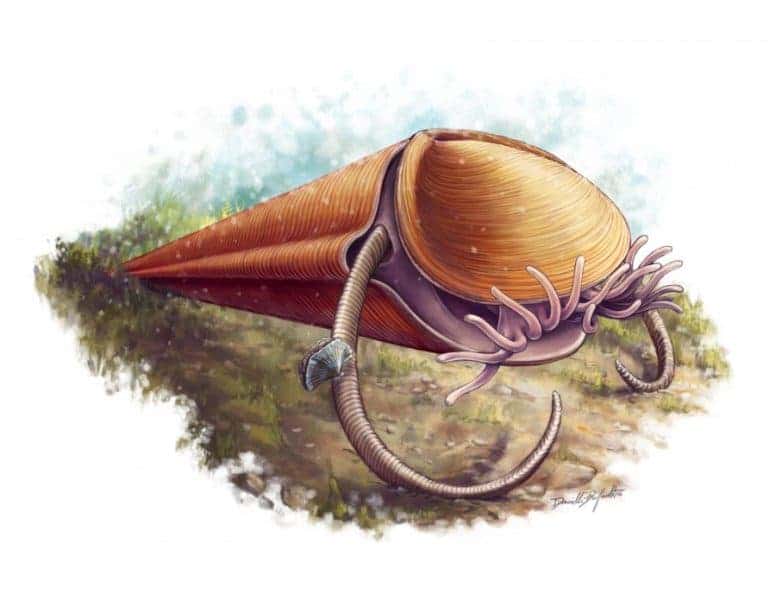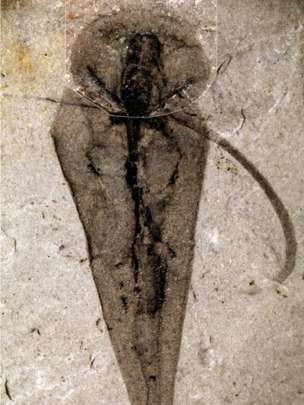This strange creature lived on the bottom of the ocean some 530 million years ago during the Cambrian explosion. They were among the first animals to develop external mineralized skeletons but until recently – we didn’t really know what they were.

They’re called hyoliths, and we previously thought they belonged to the same family as snails, squid, and many other molluscs. But Joseph Moysiuk of the University of Toronto found otherwise. After analyzing more than 1,500 specimens dug out of rocks in Canada and the US, he believes they are more related to brachiopods, a distinct group of which few members survive.
“Hyoliths are small cone-shaped sea dwelling animals. They are known from all around the world, mostly from fossils of their shells,” he told BBC News. “They appear in the fossil record about 530 million years ago and survived until about 250 million years ago. But the question of where hyoliths actually fit into the tree of life has been somewhat of a mystery for the last 175 years, since they were first described.”
Brachiopods somewhat resemble oysters, featuring hard “valves” (shells) on the upper and lower surfaces, unlike the left and right arrangement in bivalve mollusks. They open their valve at the front when feeding but otherwise keep them closed to protect their inner organs. The structure of their body is what gave the hyoliths away, Moysiuk says.
“Our most important and surprising discovery is the hyolith feeding structure, which is a row of flexible tentacles extending away from the mouth, contained within the cavity between the lower conical shell and upper cap-like shell,” said Moysiuk. “Only one group of living animals — the brachiopods — has a comparable feeding structure enclosed by a pair of valves. This finding demonstrates that brachiopods, and not molluscs, are the closest surviving relatives of hyoliths.
“It suggests that these hyoliths fed on organic material suspended in water as living brachiopods do today, sweeping food into their mouths with their tentacles,” Moysiuk said.

Brachiopods have inhabited the Earth for over 500 million years, although fewer species survive to this day. They are very well represented in the fossil record and in fact, hyoliths are too, although they became extinct some 250 million years ago. It’s not that there were no fossils available, it’s that these fossils didn’t preserve vital information about their soft tissues. Just the mineral shells were preserved. This breakthrough in this study was due to findings made in the renowned Burgess Shale, an exceptional fossil-bearing deposit exposed in the Canadian Rockies of British Columbia. Jean-Bernard Caron at the Royal Ontario Museum, who also participated in the study, explains:
“Burgess Shale fossils are exceptional because they show preservation of soft tissues which are not usually preserved in normal conditions,” said Caron, Moysiuk’s research supervisor, who is the senior curator of invertebrate palaeontology at the ROM and an associate professor in U of T’s Departments of Earth Sciences and Ecology & Evolutionary Biology.
Journal Reference: Joseph Moysiuk, Martin R. Smith, Jean-Bernard Caron. Hyoliths are Palaeozoic lophophorates. Nature, 2017; DOI: 10.1038/nature20804
Was this helpful?



